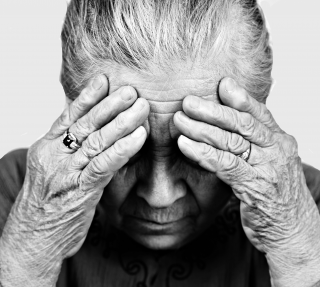
Late Life Depression,
clinically called geriatric depression,
affects an estimated 15% of Americans ages 65 and older. The World Health
Organization estimates that late life depression effects 7% of older people
worldwide. Given their advanced age, many mistake this mood disorder
for other conditions associated with getting older like memory loss,
muscle/joint weakness or side effects from medications. As a result, upwards of
90% of seniors don’t receive adequate care, with 78% not receiving any
treatment at all.
Learning the myths that surround geriatric depression can help you identify it in yourself or a loved one. Remember, depression is a serious, but treatable disorder.
· Fact: Depression is not a normal part of aging. This is the biggest myth of aging and mental health. Depression at any age is not a normal part of the aging process.
· Myth: Depression in later life is not a major health concern.
· Fact: The World Health Organization has stated that depression is a global crisis. Late life depression occurs in about 15% of seniors ages 65 and older. In the United States alone approximately 7 million older adults meet the criteria for a depressive disorder. However, over 90% of seniors are not being diagnosed or treated for this illness, which places them at enormous risk. Depression in the most common mental health problem for the elderly.
·
Myth:
Depression will go away on its own.
·
Fact: A serious mental
illness cannot be willed away or brushed aside with a change in attitude.
Ignoring the problem doesn’t give it the slip either. Depression is serious,
but treatable illness, with a success rates of upwards of 80% for those who
seek intervention.
·
Myth: Depression
affects seniors in the same way it does younger people.
·
Fact: Depression is not a one-size-fits-all illness. It
actually presents differently in seniors than in younger individuals. Studies
suggest seniors experience more structural changes in the brain and vascular
issues, and aren’t aware that they’re feeling depressed. Seniors report more
somatic complaints and irritability than sadness or despair as do younger
people.· Myth: The risk of suicide in the elderly is greatly exaggerated.
· Fact: The population for the greatest risk of suicide is the elderly, with men, age 85 and older having the highest death by suicide rate of all. Though suicide rates for seniors varies across countries and cultures, data shows that 85-90% of persons aged 65 years and over who died by suicide had a diagnosable depressive disorder. Also, 2/3 of seniors who died by suicide were seen by primary care physicians within a month of their deaths, and up to 1/2 half were treated by a primary care doctor within one week of their deaths. These statistics makes the need for identifying at-risk seniors urgently crucial.
· Fact: Seniors with depression can live full, productive lives. In fact, many high profile people – even now in their golden years - are doing incredible things despite living with depression. Consider senior celebs like Rocker, Bruce Springsteen, Actor Harrison Ford, Talk Show Host and Writer Dick Cavett, Comedian Stephen Fry, Entrepreneur Richard Branson, Tennis Legend Cliff Richey. How about the greatness of President Abraham Lincoln, Choreographer Alvin Ailey, Prime Minister Winston Churchill, Film Director Akira Kurosawa and Artist Michelangelo. It’s considered that depression helped all of these significant icons achieve greatness.
